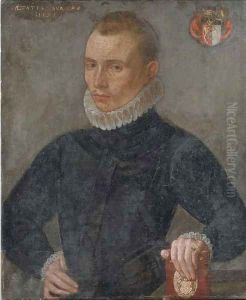Pieter Jansz. Pourbus I Paintings
Pieter Jansz. Pourbus was a Dutch Renaissance painter, draughtsman, and cartographer. He was born in Gouda, in the Dutch Republic (now the Netherlands), around 1523. Pourbus is known for his detailed portrait work as well as his religious paintings. His style is characterized by precise attention to detail and a clear, realistic use of color and perspective, which was typical of the Northern Renaissance.
Pourbus started his artistic career in Gouda but later moved to Bruges in the Habsburg Netherlands (present-day Belgium), where he became a master in the painters’ guild in 1543. In Bruges, he came under the influence of the Flemish Primitives, which included renowned artists such as Jan van Eyck and Hans Memling. Pourbus would go on to contribute to the Northern Renaissance through his work, which was influenced by the Italian Renaissance but remained distinctly Northern European in its details and technique.
Throughout his life, Pourbus worked for various prestigious patrons, including members of the local nobility and religious institutions. He was also involved in the production of maps and cartography, contributing to the emerging field of accurate geographical representation. His map of Bruges, created in 1562, is a testament to his skill as a cartographer and is of significant historical value.
Pourbus passed away in Bruges in 1584. His legacy continued through his son, Frans Pourbus the Elder, and his grandson, Frans Pourbus the Younger, both of whom became accomplished painters in their own right. Pieter Jansz. Pourbus is remembered for his contributions to portrait painting and his role in documenting the faces and fashion of the 16th-century Flemish elite, as well as for his precise and detailed cartographic work.
